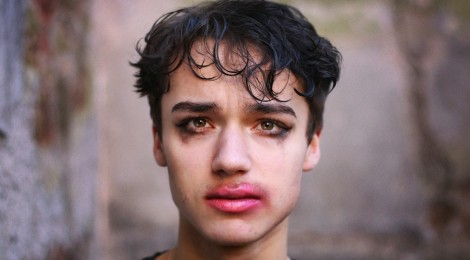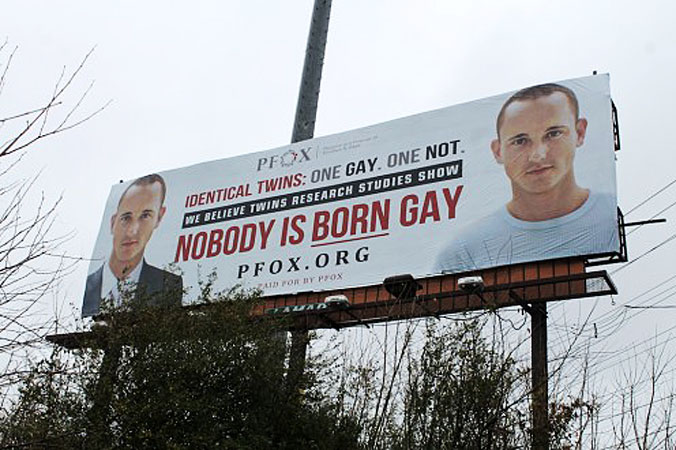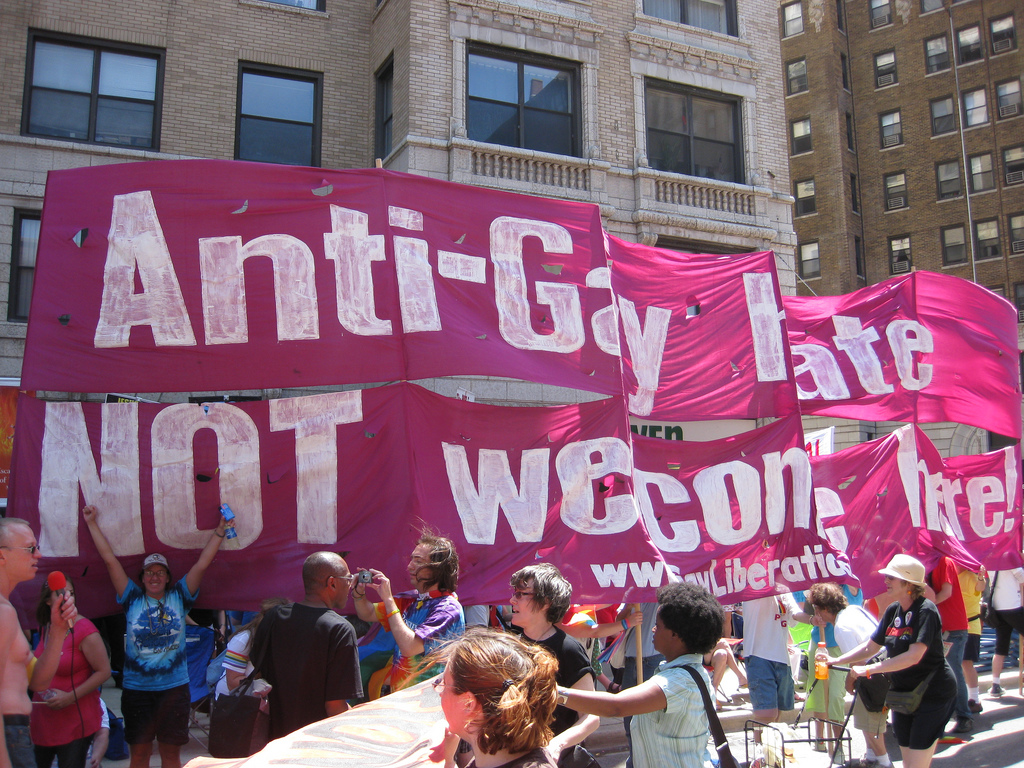
“Ex-Gay”: Conversion Therapy Movement Puts Lives at Risk
There is a billboard in Richmond, Virginia hanging above the interstate with a picture of identical male twins and a caption that reads: “Identical Twins: One Gay, One Not. We believe twin research studies show nobody is born gay.”
Parents and Friends of Ex-Gays & Gays (PFOX), the organization that created the ad, promotes the view that being gay is a choice, not a genetic predisposition, despite extensive research to the contrary.
The claims in the ad are not only false, but the men featured are not actually twins at all, or even brothers. According to the Huffington Post, the face of South African model, Kyle Roux, was superimposed onto two different bodies to give the illusion of twins. Roux was shocked to see his face on the ad, as he didn’t give permission for the image to be used. And…he is openly gay.

PFOX is part of the controversial Ex-Gay Movement, encouraging gay persons to refrain from same-sex relationships, eliminate homosexual tendencies, and develop heterosexual desires. Their view: Gay must be cured.
They consider sexual orientation a choice, and those who identify as gay are willingly choosing a deviant lifestyle. But this ideology results in family rejection and self-hatred among LGBTQ individuals, as well as intolerance and discrimination in the community.
Organizations promoting this view are often affiliated with religious institutions. PFOX believes gay people can renounce homosexuality through religious revelations or conversion therapy, also known as reparative therapy.
Sexual orientation conversion therapy became popular in the 1960s. According to the American Psychological Association report, Appropriate Therapeutic Responses to Sexual Orientation, different disciplines of psychology influenced practices of conversion therapy.
In response to such treatments, numerous mental health and psychological organizations publically announced that homosexuality is not a mental disorder and is not something that can or should be cured. In fact, the American Psychiatric Association’s Board of Trustees removed homosexuality from the Diagnostic and Statistical Manual of Mental Disorders, Second Edition (DSM II) in 1973. And in 2000, they further stated:
“The potential risks of reparative therapy are great, including depression, anxiety and self-destructive behavior, since therapist alignment with societal prejudices against homosexuality may reinforce self-hatred already experienced by the patient.”

The risks are even greater among gay youth. A 2009 study by Caitlin Ryan of San Francisco State University found that young adults who experience family rejection based on their sexual orientation are eight times more likely to attempt suicide and six times more likely to experience depression.
Despite these findings and professional opposition to conversion therapy by both the American Psychiatric and American Psychological Associations, many of these treatments continue to be used and promoted.
Michele Bachmann, a Republican former member of the U.S. House of Representatives, considers homosexuality a choice. Bachmann and her husband were found to be practicing conversion therapy at their Christian counseling clinic in Minnesota.
Conversion therapy is still legal in most U.S. states, though anti-conversion bills have been signed into law in California, New Jersey, and Washington DC. Campaigns such as the #BornPerfect movement are working toward expanding state bans into other areas.
While public attitudes and legislation are shifting toward respect for LGBTQ individuals, conversion therapy is still a common practice, compromising mental health, threatening lives, and undermining efforts of movements that stress tolerance and equality.
– Eleenor Abraham, Contributing Writer
Photo Credits:
Feature: Rose Morelli on Flickr
First: lgbtqnation
Second: Kevin Zolkiewicz on Flickr



